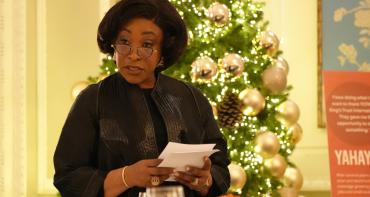The workshop will focus on cutting edge technologies that can balance the need to protect the environment with health, wealth and development requirements.

What more can we do to tackle the challenge of climate change? Is it possible to reverse its impact? Leading scientists and climate experts will meet to explore the potential to move beyond mitigation and adaptation to climate change reversal. The Commonwealth’s Regenerative Development to Reverse Climate Change workshop will focus on cutting edge technologies that can balance the need to protect the environment with health, wealth and development requirements.
Scheduled just days ahead of the international climate change conference, COP22, in Marrakesh, this event will provide fresh perspectives for potential innovation.
This two-day workshop will:
- explore whether scientists can develop a carbon reduction programme which can roll back the effects of climate change as well as catalyse economic development
- examine the practical application of specific concepts such as biomimicry, where buildings are engineered to have the carbon reducing capabilities of trees
- discuss the implementation of the circular economies, which involves the conversion of food waste to renewable gases
- examine the potential for a long-term programme that will provide countries with proven, practical and tailored initiatives they can use to cut carbon emission
- discuss how resources can be mobilised to fund innovations to address climate change
- consider the potential for a “climate change reversal lab” in June 2017, so Commonwealth countries can receive a climate action toolkit
News and announcements:
Projects:
The Queen's Commonwealth Canopy
The Queen’s Commonwealth Canopy, which has been proposed by Commonwealth countries wanting to harness their collective expertise and resources to protect the world’s forests.
Harmony: Great Bear Rainforest
On the mainland coast of British Columbia, the Great Bear Rainforest stretches for more than 250 miles. Born of a complex interaction between ocean, mountains, forest and rain, this is a land of mist-shrouded valleys and glacier-cut fjords, old-growth forests and rich salmon streams. At 21 million acres, it is part of the largest remaining coastal temperate rainforest on Earth.
Loess Plateau Rehabilitation Project
The Loess Plateau Watershed Rehabilitation Project is an international illustration of a top-down multidisciplinary ecological engineering approach to address an anthropogenically derived geological issue of sediment erosion in China.
What is Biomimicry?
Can nature teach us how to innovate without harming our environment? Learn more about how nature can inspire our technologies, and even the way we design buildings.
Life in Syntropy
A deforested area, devoid of trees and unable to support food production. Watch this film find out how scientists managed to cultivate crops and plant trees again.
So, could we use the same approach and techniques to assist Commonwealth countries, facing and fighting drought and famine?



